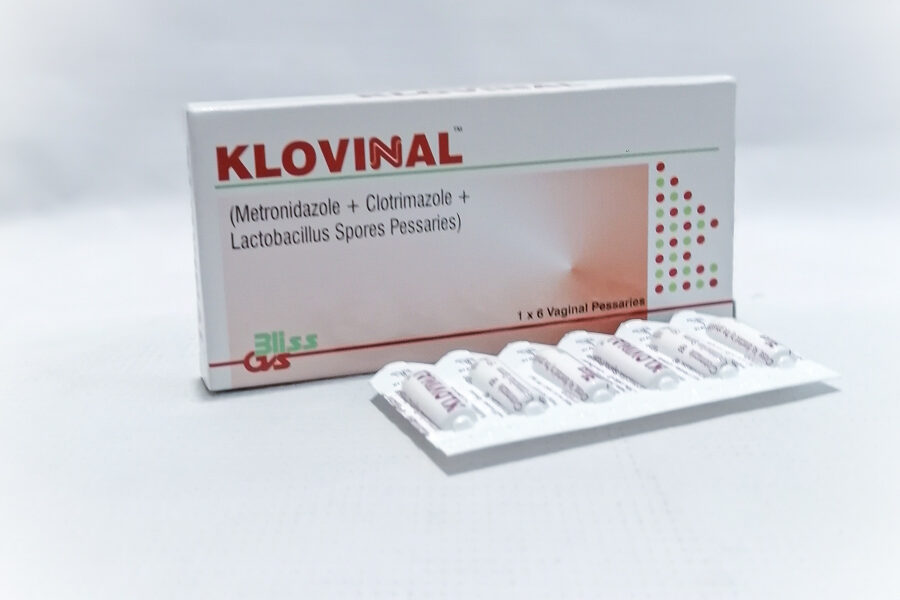Common vaginal infections, in most cases, find their solution in Klovinal. What is Klovinal, and why do practitioners suggest it so often?
Klovinal is a vaginal suppository used to treat various infections, such as bacterial vaginosis (BV) and candidiasis, also known as yeast infections. The dual-action formula of Klovinal attacks the bacteria and fungi sources of the infection, thus providing relief promptly from various uncomfortable symptoms.
Active Ingredients of Klovinal
Klovinal owes its effectiveness to two primary components:
- Metronidazole – This ingredient fights bacterial infections by inhibiting the growth of harmful bacteria. It is widely used for treating BV and other anaerobic infections.
- Miconazole – Miconazole is an antifungal agent that combats yeast, making it perfect for treating vaginal candidiasis.
These ingredients work together to eliminate both bacteria and fungi, offering comprehensive relief.
How Does Klovinal Work?
Klovinal’s strength lies in its dual-action formula. While metronidazole targets the bacteria responsible for BV, miconazole prevents the growth of fungi like Candida, ensuring a balanced vaginal environment. This combination helps restore vaginal health quickly and efficiently.
When Should You Use Klovinal?
Healthcare professionals recommend Klovinal for conditions such as:
- Bacterial vaginosis (BV)
- Yeast infections (candidiasis)
It’s most effective when used during the early stages of infection, though it can also be prescribed for more severe cases.
Correct Usage and Dosage of Klovinal
Klovinal is usually administered once a day for 7 days. The suppository is inserted directly into the vagina using an applicator, preferably at night to allow maximum absorption. Follow your healthcare provider’s instructions closely to achieve the best results.
Klovinal and Menstrual Cycle
Can Klovinal be used during menstruation? Absolutely! However, the effectiveness may be slightly reduced due to the natural flow of your period. If possible, it’s recommended to start or resume the treatment after your period ends for optimal results.
Klovinal vs. Other Treatments
Klovinal’s dual-action formula makes it stand out from single-action creams or oral medications. If you’re dealing with both bacterial and fungal infections, Klovinal offers an all-in-one solution.
Potential Side Effects of Klovinal
As with any medication, Klovinal can cause side effects, though not everyone experiences them. Common side effects include:
- Mild vaginal irritation or burning
- Increased vaginal discharge
In rare cases, users may experience allergic reactions like swelling, itching, or rashes. If you notice any severe side effects, contact your healthcare provider immediately.
Managing Side Effects
To minimize irritation:
- Avoid tight-fitting clothes during treatment.
- Use unscented products to reduce irritation.
- Contact your doctor if symptoms worsen.
Precautions to Take Before Using Klovinal
It’s essential to discuss your medical history with your healthcare provider before starting Klovinal. Inform your doctor if you:
- Are pregnant or breastfeeding
- Have allergies to any of the ingredients
- Are taking other medications that might interact with Klovinal
Storage and Handling of Klovinal
Store Klovinal at room temperature in a cool, dry place. Keep it away from direct sunlight, and ensure it’s out of reach of children. If the product expires, discard it properly.
How Long Does Klovinal Take to Work?
Many users report symptom relief within 3 to 5 days, though completing the full treatment course is essential to prevent reinfection.
What If Symptoms Persist After Treatment?
If your symptoms don’t improve after finishing the prescribed course, consult your doctor. They may recommend additional tests or a different treatment approach klovinal.




